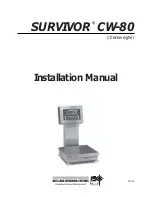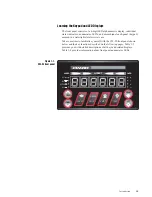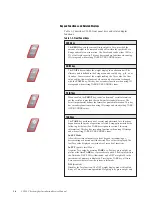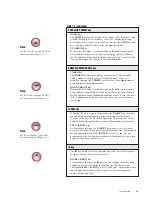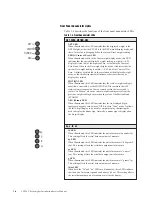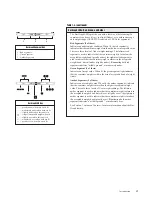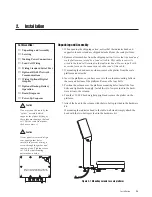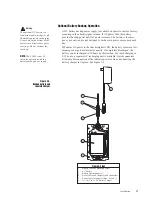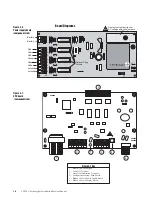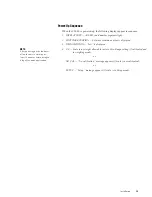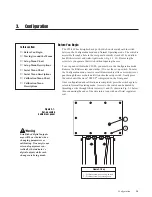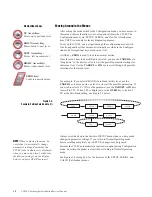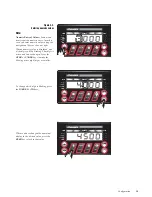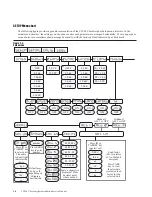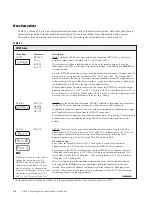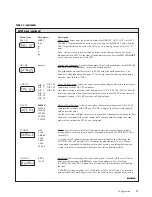
2-4
CW-80 Checkweigher Installation/Service Manual
Note:
RS-485 must be purchased at time of
order and factory installed. No field
installation of this option is avail-
able.
The following communications parameters (Table 2-2) apply to both the
RS-232 and 20mA Current Loop interfaces.
Table 2-2.
Serial communications parameters
• Continuous or Demand outputs
• 150, 300, 600, 1200, 2400, 4800, 9600, or 19200 baud rate
• 7 data bits (with parity) or 8 data bits (no parity); 1 start bit and 1 stop
bit
• None, odd, or even parity
• Line termination: <CR LF> or <CR>
• End of line delay up to 2.0 seconds in 200 mS increments
Using Optional RS-485 Network Communications
You can configure multiple CW-80 Checkweigher to operate on a
2-wire RS-485 network serial communications line. The expanded
serial communication option allows network applications.
To enable RS-485 communications, you must connect two communica-
tion wires to terminals A and B on the serial communications terminal.
A ground wire is also required. See Figure 2-3 and Table 2-1 on the
previous page for more information on expanded serial communica-
tions.
Consider the following guidelines for an RS-485 interface.
Table 2-3.
RS-485 hardware
• Every piece of equipment must have a unique address.
• Every piece of equipment must remain quiet while waiting for a
command.
• All interface wiring and RS-485 transceivers must be correctly installed
as 2-wire implementations.
• The ground terminals of all equipment in the network must be connected
to minimize common mode voltage differences.
Table 2-4.
RS-485 software
• The controller software must be compatible with the CW-80’s protocol.
Some equipment may have its own, proprietary RS-485 protocol.
• All equipment in the RS-485 network must follow the rules of half
duplex communications: “Be quiet unless spoken to” and “Never echo
back what you are receiving.”
• The controller must turn on its transmitter, send the commands, wait for
the transmission, and finally, turn off its transmitter to listen.
• The controller software must be able to handle the echo from its own
transmission, since the transmit and receive lines are shared.

